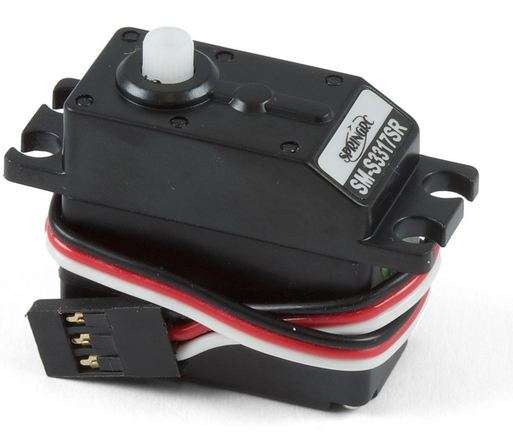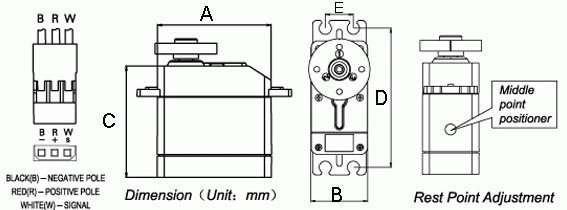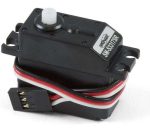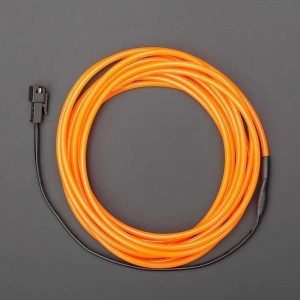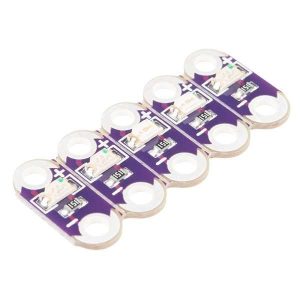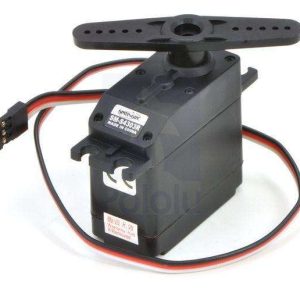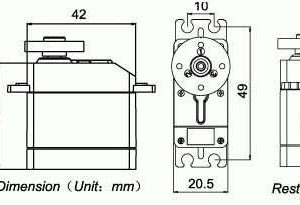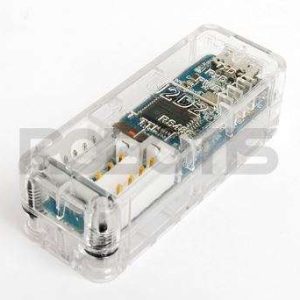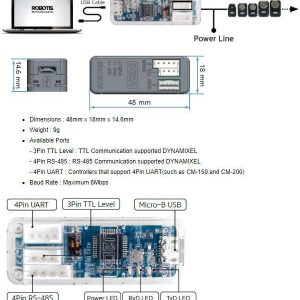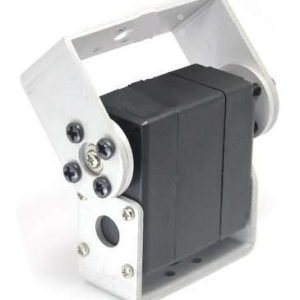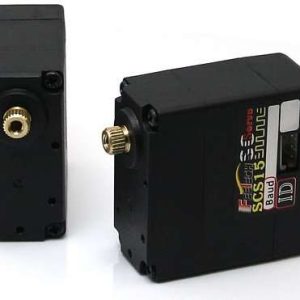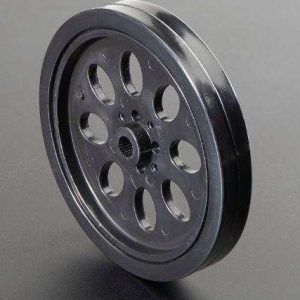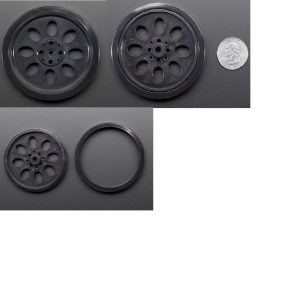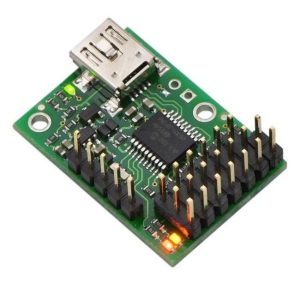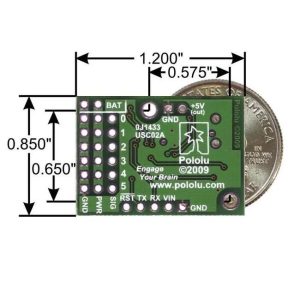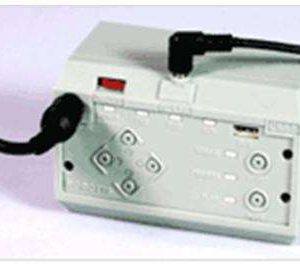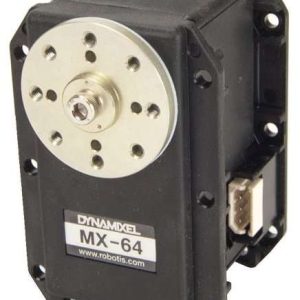This is a high speed servo that has been built for continuous rotation, making it an easy way to get your robot moving. It features two ball bearings on the output shaft for reduced friction, and it offers easy access to the rest-point adjustment potentiometer. If you need a stronger continuous rotation servo we carry the 15.4 kg.cm version.
Key specs at 6 V, 1.7 kg-cm, 19g , Continous rotation – 86rpm
Essentially, it is a gear motor that can be controlled by an RC servo controller. It is not normally used as an actuator, as there is no way of commanding it to move to a particular position, as a standard RC servo does.
The continuous rotation servo converts RC servo position pulses into continuous rotation speed. The default rest point is 1.5 ms, but this can be adjusted by using a small slotted screwdriver to turn the middle-point positioner (see the Mechanical Drawing). Pulse widths above the rest point result in counterclockwise rotation, with speed increasing as the pulse width increases; pulse widths below the rest point result in clockwise rotation, with speed increasing as the pulse width decreases.
Normal servos can be adapted to continuous rotation use, but the problem is that the range of positions that result in the motor being stopped or operating at less than maximum speed is very narrow. Continuous rotation servos, depending on the position commanded, can go forward or reverse at different speeds. With an adapted continuous rotation servo, the position range for the different speeds is very narrow, making it difficult to produce a specific speed.
These dedicated continuous rotation servos are superior because they have a very wide “deadband” so you can be sure the motor is stopped when you command it, and the position range for forward or reverse motion is very wide, giving lots of speed resolution.

